Beloved women of sculptor Zhbanov

Vladimir Zhbanov, Belarusian sculptor
Who inspired Lady on the Bench and Girl with an Umbrella
It has been 12 years since the king of urban park sculpture left us, yet his art continues to enchant both residents and visitors of Minsk, and becomes surrounded by legends. Did you know that if a lonely man sits next to the beautiful sculpture of Unknown Woman — aka Lady on the Bench, or Proud Lady, or Minsk Woman — in Mikhailovsky Park and takes her hand, he will soon find a partner for life? Judging by the polished bronze knee that has been touched by many, the magic is also attributed to other parts of the elegant lady’s body. The backstories behind the creation of Vladimir Zhbanov’s unique bronze figures are even more intriguing. Together with the master’s daughter, Darya, we strolled through the memorable places and discovered who inspired him, how, and when.
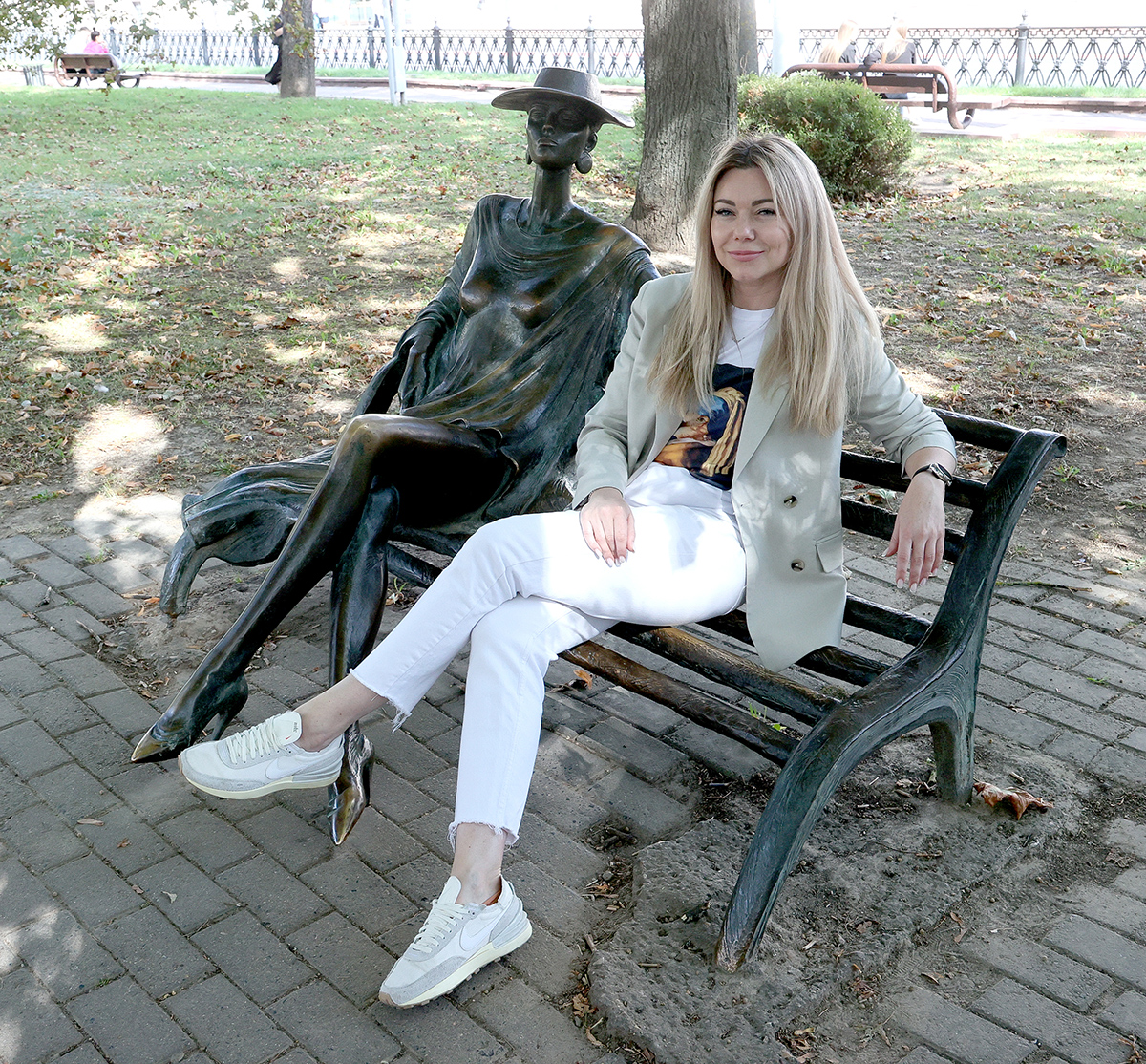 Darya Zhbanova
Darya Zhbanova Family life and sacrifice to art
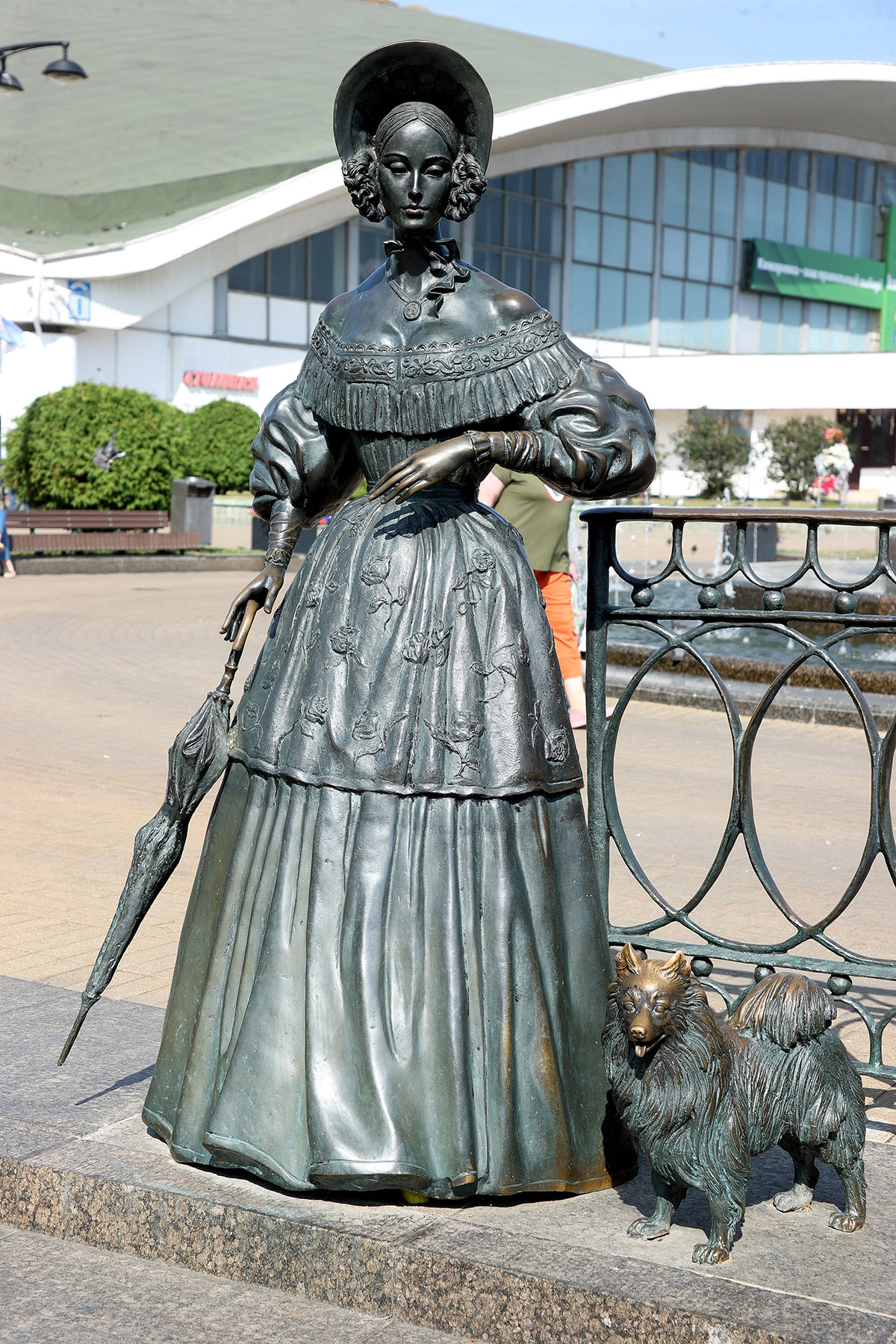 Lady with a dog
Lady with a dog
We waited for the selfie lovers to finish their photo session with Lady on the Bench before sitting down beside it. This is the first and perhaps the most famous park sculpture by Vladimir Ivanovich [Zhbanov]. In 2001, it received a medal and the first prize in the Best Avant-Garde Solution nomination at the Hi-Tech International Exhibition in Saint Petersburg.
In the image of the bronze city woman, Darya Zhbanova sees the traits of her mother. “The same royal posture, modesty and pride all at once, in a word — nobility,” she observed with a smile.
The young wife, Zhanna, was both muse and inspiration for Vladimir Zhbanov. Yet, she was not the one who just posed for hours in beautiful outfits while receiving exquisite compliments. “My mother devoted herself entirely to my father and his creative work,” Darya revealed. “Work was always his top priority, and she accepted it as a given. As far as I can remember, my dad was always in the workshop, sculpting his next piece. There were always a lot of artists, actors, and architects around him. Our family, home, and housekeeping were completely dependent on my mother. My father was never even asked to fix a shelf or repair anything as he absolutely detested repairs.”
The sculptor’s spouse Zhanna was not just a homemaker and mother — she became her husband’s personal driver and assisted him in the workshop. She worked on the wax moulds, created mock-up models on the computer, and handled the sculptor’s documentation.
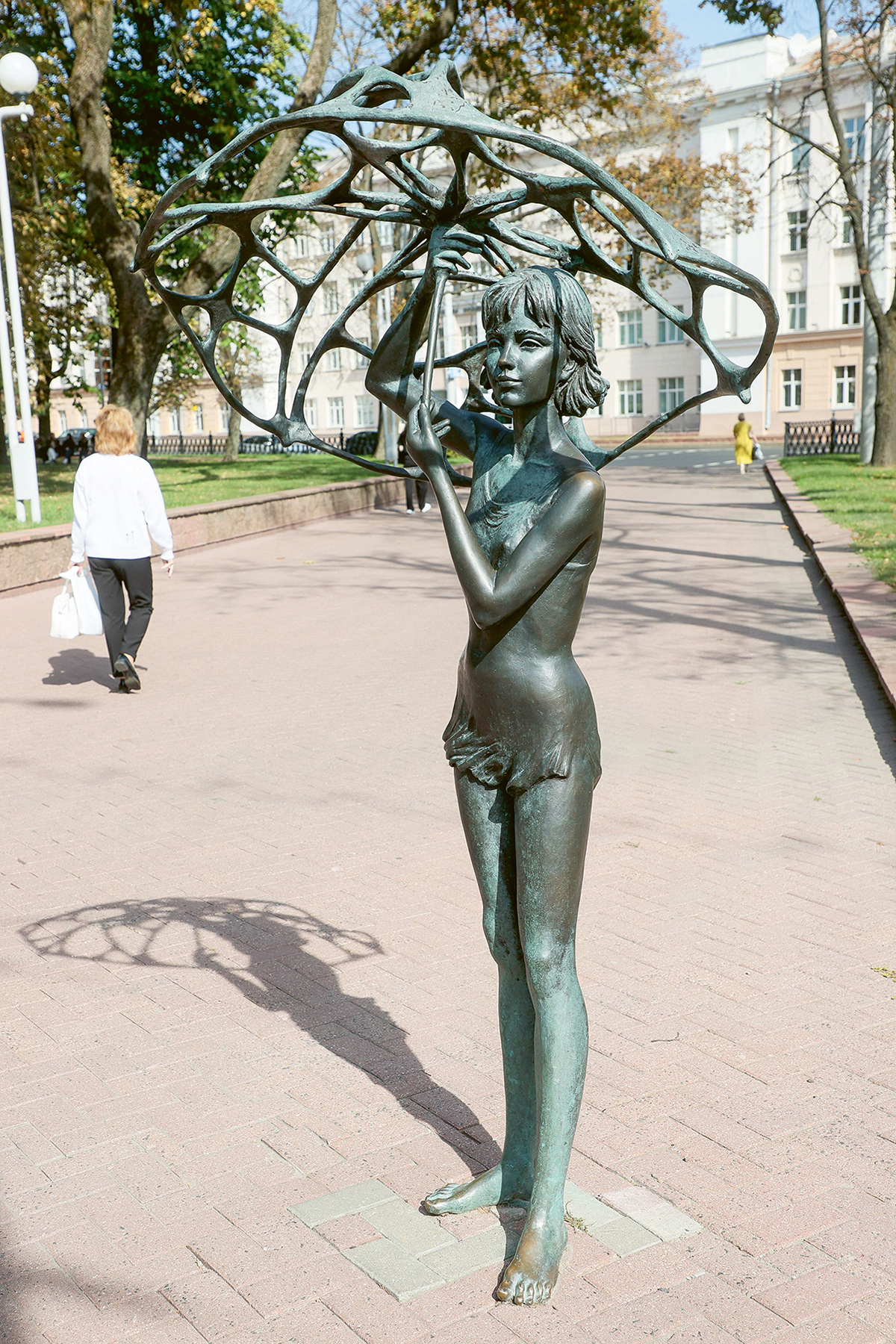 Girl with an umbrella
Girl with an umbrella
‘I will do everything in my power,’ she said then. She never reproached him for his unreliable income and asked for nothing during the hungry years of the 1990s when he was out of work. She believed in his talent and always supported him. I understand very well why he once poignantly told her, ‘Without you, I would have surely been lost…’”
Sisters under an umbrella
Another significant bronze figure — Girl with an Umbrella in Mikhailovsky Park — was sculpted by Zhbanov using both of his daughters as models. “Both I and Masha posed for him,” shared Darya. “The sculpture’s face and figure resemble my sister. Yet, my father used imagination to enhance our features, ultimately creating a composite image of a slender, defenceless teenage girl. It was his artistic response to the tragedy that occurred at Nemiga.”One of the memorable moments during her studies at the Academy of Arts was a visit of the Head of State.
“I remember sitting in the third row in the hall and hearing how Aleksandr Grigorievich [Lukashenko] cited my father as an example to the students, future cultural workers,” Darya recounted. “He said something like, ‘Zhbanov first creates and proposes, and only then thinks about how much he will be paid.’ That was absolutely true. I was happy and proud that my perception of my father completely aligned with the President’s vision.”
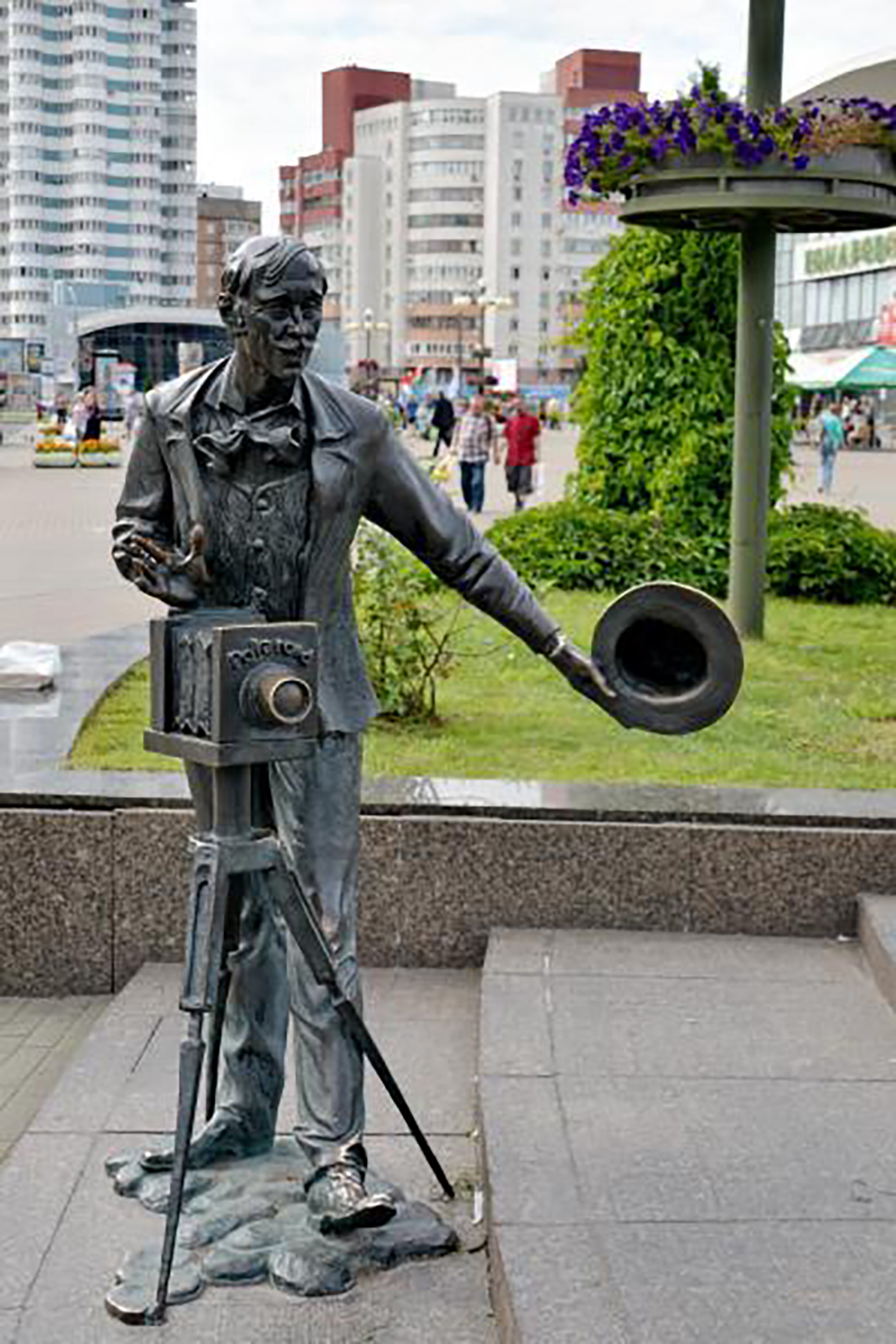 Photographer
Photographer
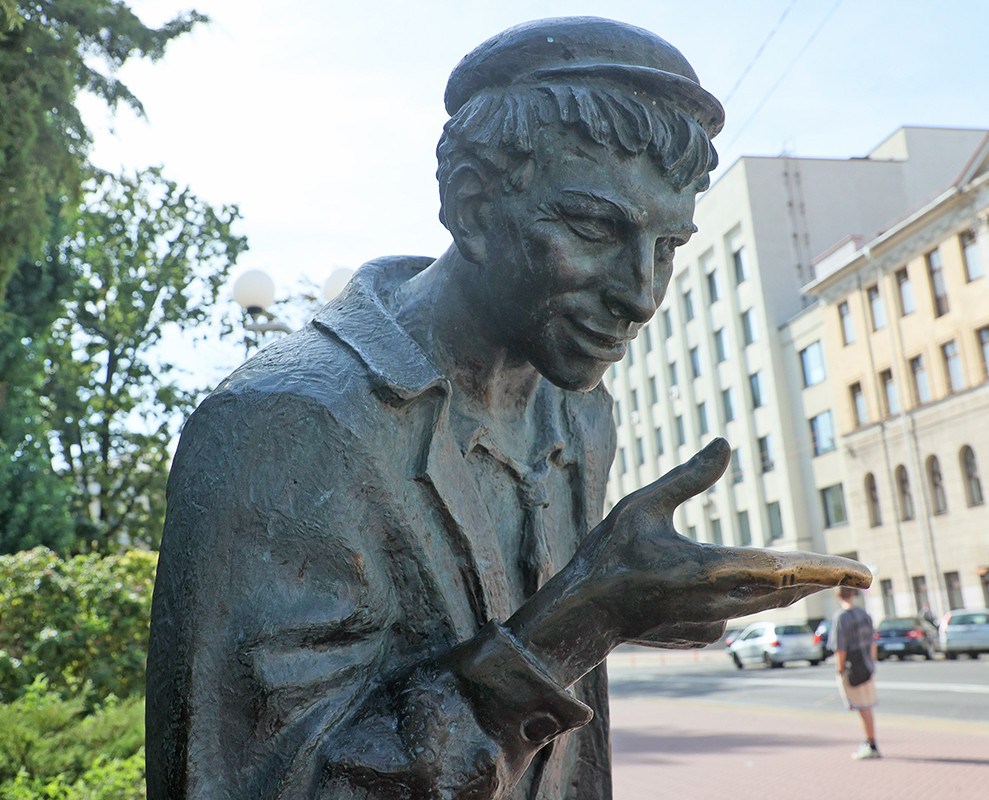 Getting a light
Getting a light
Image was born before it was needed
Vladimir Zhbanov always remained true to his creative calling. His elder daughter sees one of the reasons for the popularity of his sculptures among the people in this dedication, “He loved life, communication, noticed interesting people, details, and images around him, and created without waiting for commissions, inclusion in state programmes, or guarantees of funding. He always had numerous drafts, sketches, and miniature sculptures in development. When circumstances aligned or word of mouth indicated a need or interest, he would showcase what he had.”This is how his sculptures in Mikhailovsky Park came about. In the early 2000s, as the country and the capital city gradually began to emerge from a deep economic crisis, the city authorities contemplated how to beautifully decorate the green spaces near the train station, and Zhbanov had options for park sculptures, which were still lacking in Belarus at the time.
We stopped by the sculpture titled Getting a Light that features a man — we saw a cigarette in the hand, provided by yet another passerby. The cheerful squint of the bronze man seems to beckon one to respond to its invitation for feedback!
“My father’s personality, his energy is felt in each of his works,” Darya noted. “They embody humour and playfulness. After all, he got into each character at first and would become for some time the man lighting a cigarette, or a lady, a horse, or a goose.”
“Dad could tolerate physical pain. He could sculpt for hours standing on a ladder, even when his joints were excruciatingly twisted, until he completed the task. However, emotional pain would destroy him and drain his strength. When the wave of criticism hit him after the installation of the fountain sculpture The Golden Trefoil in Molodechno for its nudity, he was literally wilting before our eyes. Each time he would come home with high blood pressure, asking, “I do not understand, why are they treating me like this?”
Not for regalia or honours
Responding to the question when the family realised that their father had become a famous person, Darya Zhbanova recalled, “Once we were walking near the city hall, where his Governor’s Carriage is situated. A friend of his was accompanying us. Tourists from Moscow were just getting into the carriage to take photos, and a long queue was formed. A woman pushed my dad aside, saying, ‘Sir, you are in our way!’ My father’s friend remarked, ‘He is actually the author of this composition,’ to which the woman responded, skeptically joking, ‘Nah, that does not seem likely.’ Dad smiled and stepped aside. He never felt famous, and because of that, we — his children — did not, either.”According to Darya Zhbanova, her father never sought privileges for his work nor did he use his name to pave the way for his children. He remained an exceedingly simple and humble person until the end. He conversed with the press, authorities, and colleagues with equal pleasure. He served art and the people — this is, perhaps, the main reason why everyone can see themselves in his folk sculptures.
 Governor’s Carriage
Governor’s CarriageBy Yelena Kozlovskaya




